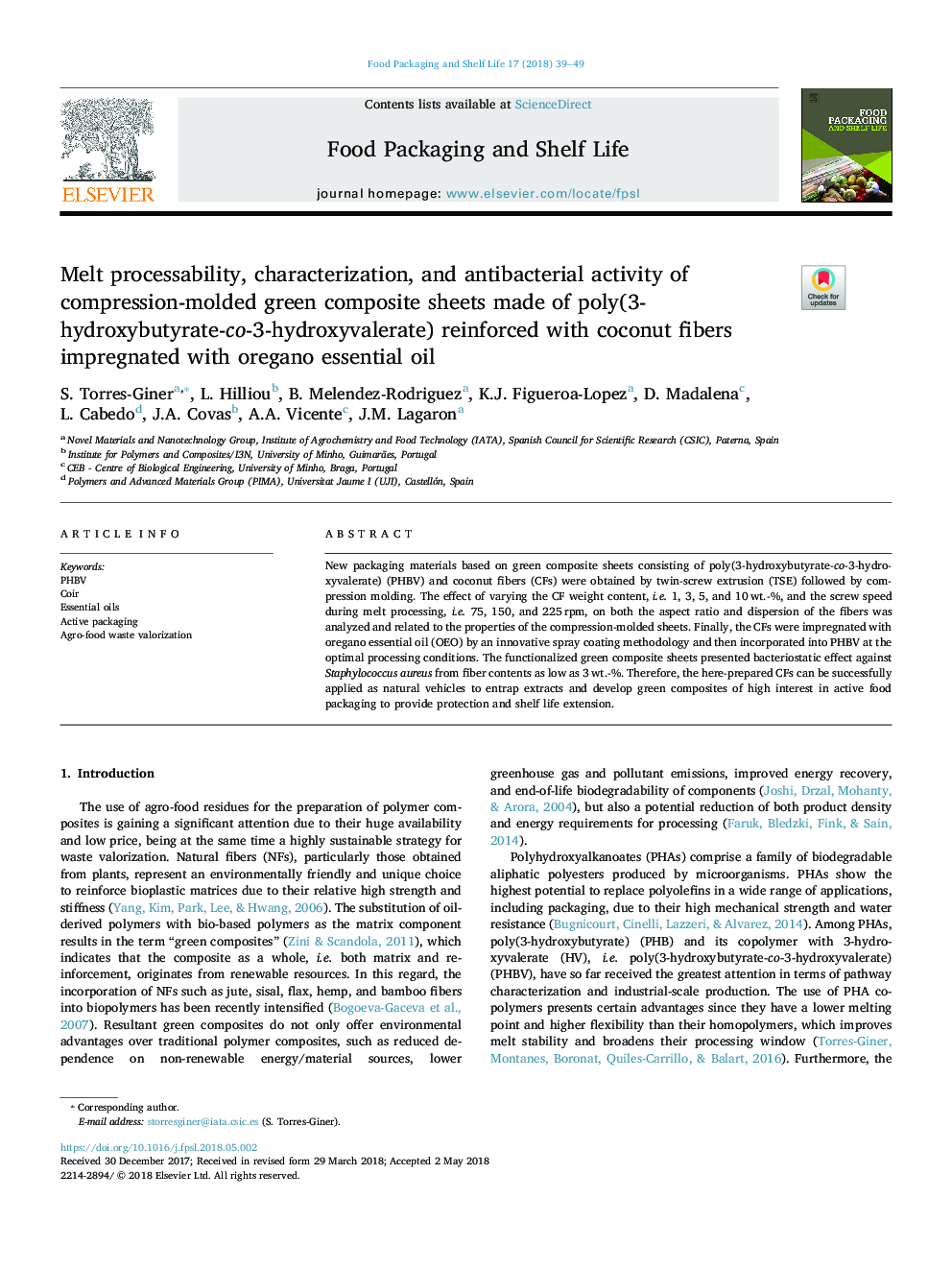| Article ID | Journal | Published Year | Pages | File Type |
|---|---|---|---|---|
| 6489094 | Food Packaging and Shelf Life | 2018 | 11 Pages |
Abstract
New packaging materials based on green composite sheets consisting of poly(3-hydroxybutyrate-co-3-hydroxyvalerate) (PHBV) and coconut fibers (CFs) were obtained by twin-screw extrusion (TSE) followed by compression molding. The effect of varying the CF weight content, i.e. 1, 3, 5, and 10â¯wt.-%, and the screw speed during melt processing, i.e. 75, 150, and 225â¯rpm, on both the aspect ratio and dispersion of the fibers was analyzed and related to the properties of the compression-molded sheets. Finally, the CFs were impregnated with oregano essential oil (OEO) by an innovative spray coating methodology and then incorporated into PHBV at the optimal processing conditions. The functionalized green composite sheets presented bacteriostatic effect against Staphylococcus aureus from fiber contents as low as 3â¯wt.-%. Therefore, the here-prepared CFs can be successfully applied as natural vehicles to entrap extracts and develop green composites of high interest in active food packaging to provide protection and shelf life extension.
Related Topics
Physical Sciences and Engineering
Chemical Engineering
Bioengineering
Authors
S. Torres-Giner, L. Hilliou, B. Melendez-Rodriguez, K.J. Figueroa-Lopez, D. Madalena, L. Cabedo, J.A. Covas, A.A. Vicente, J.M. Lagaron,
